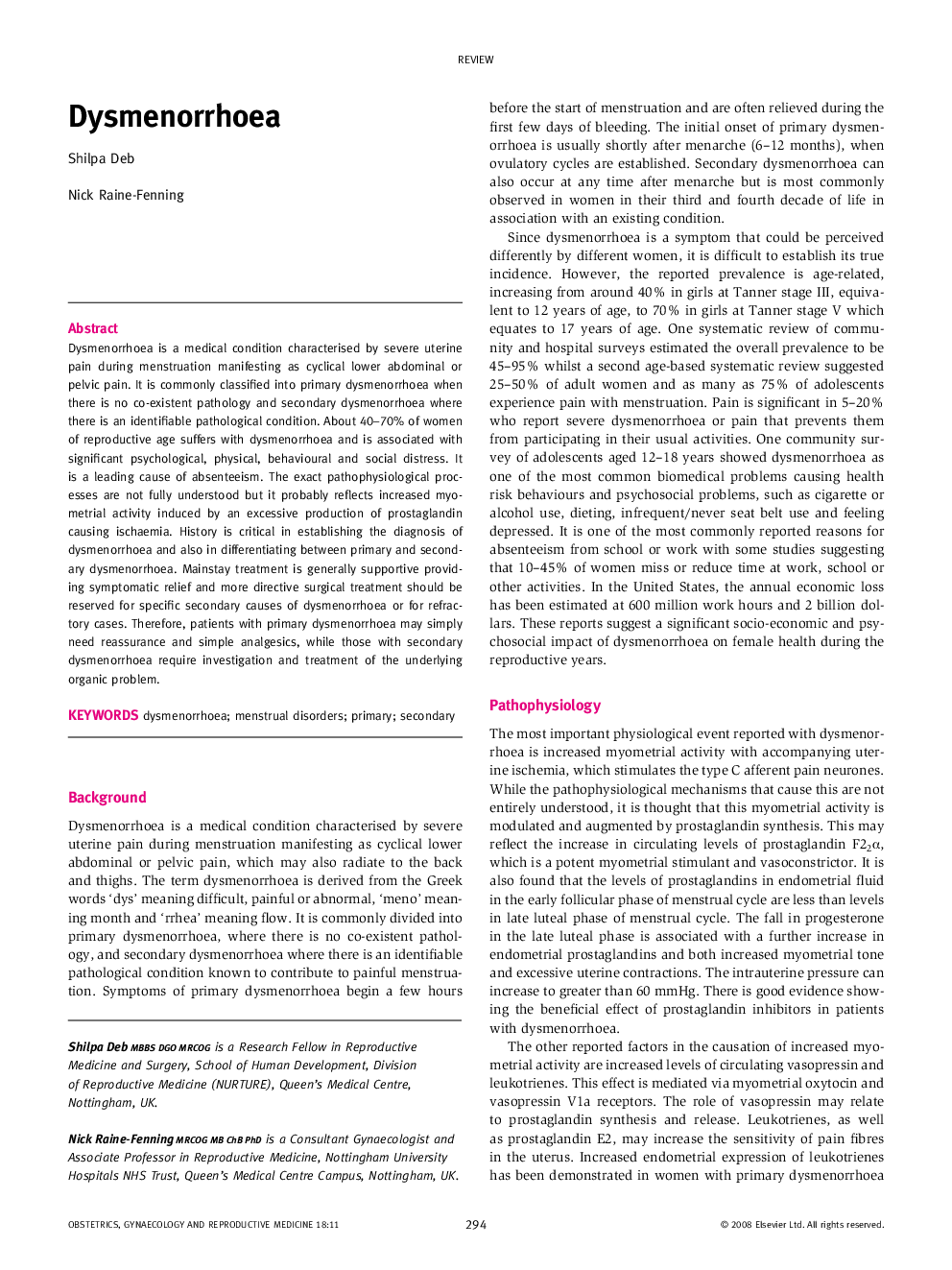| Article ID | Journal | Published Year | Pages | File Type |
|---|---|---|---|---|
| 3967503 | Obstetrics, Gynaecology & Reproductive Medicine | 2008 | 6 Pages |
Dysmenorrhoea is a medical condition characterised by severe uterine pain during menstruation manifesting as cyclical lower abdominal or pelvic pain. It is commonly classified into primary dysmenorrhoea when there is no co-existent pathology and secondary dysmenorrhoea where there is an identifiable pathological condition. About 40–70% of women of reproductive age suffers with dysmenorrhoea and is associated with significant psychological, physical, behavioural and social distress. It is a leading cause of absenteeism. The exact pathophysiological processes are not fully understood but it probably reflects increased myometrial activity induced by an excessive production of prostaglandin causing ischaemia. History is critical in establishing the diagnosis of dysmenorrhoea and also in differentiating between primary and secondary dysmenorrhoea. Mainstay treatment is generally supportive providing symptomatic relief and more directive surgical treatment should be reserved for specific secondary causes of dysmenorrhoea or for refractory cases. Therefore, patients with primary dysmenorrhoea may simply need reassurance and simple analgesics, while those with secondary dysmenorrhoea require investigation and treatment of the underlying organic problem.
